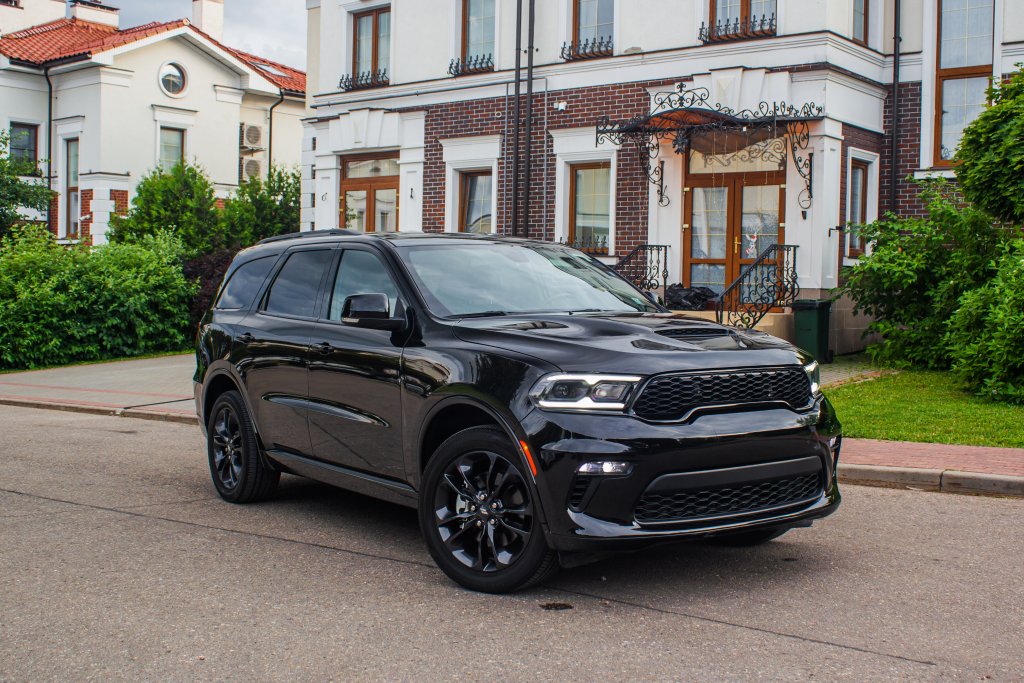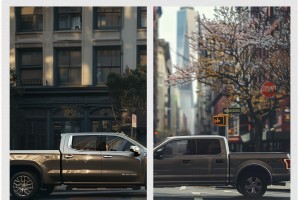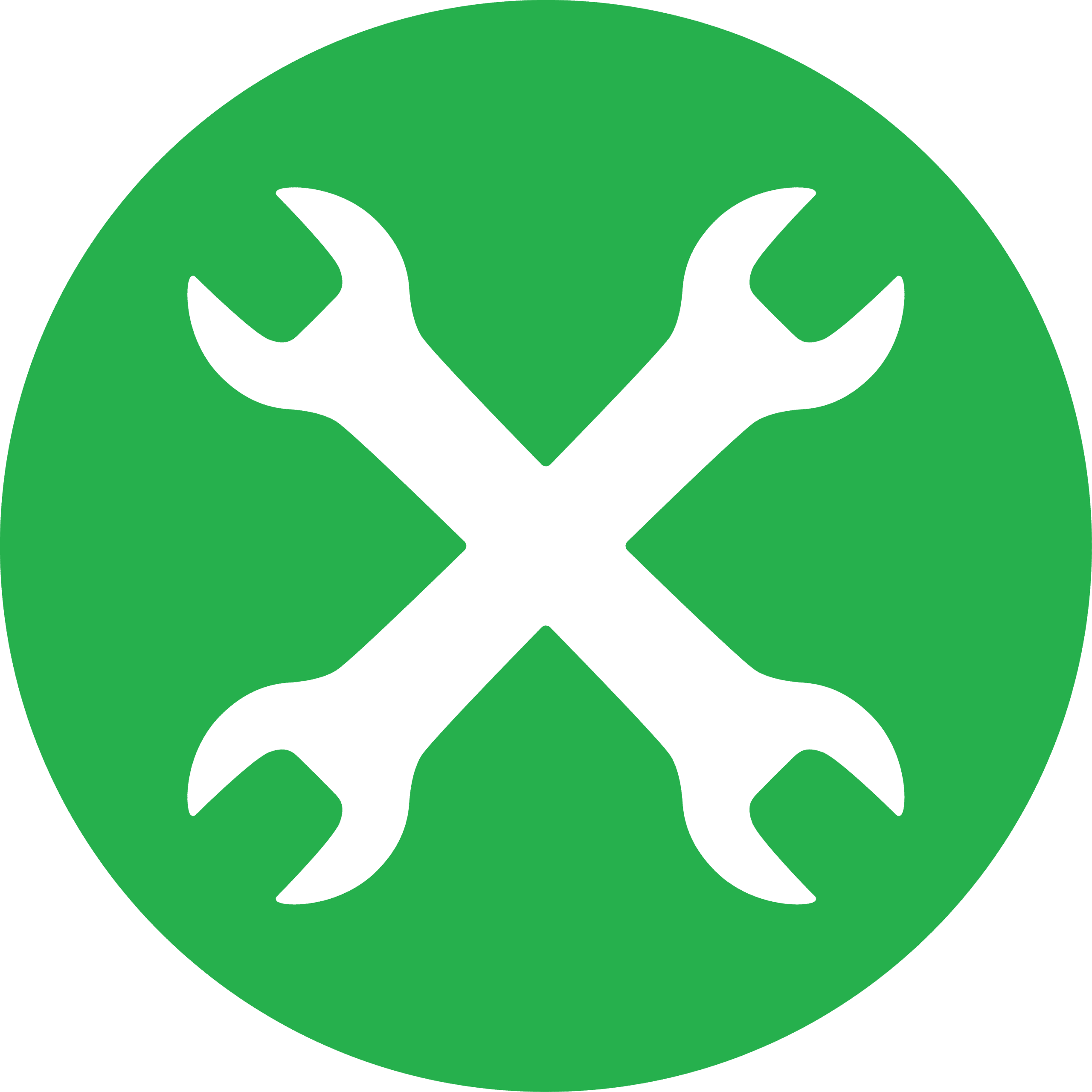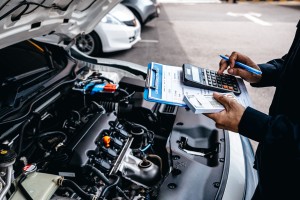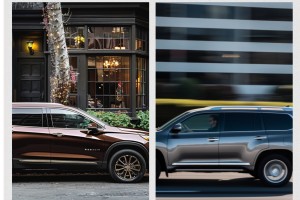The Dodge Durango has been ranked as both a full-size and mid-size SUV. It spans three generations and has been in production since 1998. There have been more than two million Durango models sold in the United States, with the most popular sales years between 1999 and 2000.
If you want to purchase an SUV, it’s important to determine which Durango models are the best and worst. We help you rank them by looking at all of the available data. Our evaluation helps you see why some are clearly better than others.
This data is good for Durango buyers who want the best deal on a reliable SUV. Additionally, it’s used for current Durango owners looking to sell the SUV, helping you decide whether you should hold onto the Dodge or dump it quickly.
Our reliability data is sourced from thousands of FIXD car scanners installed in current Dodge Durango vehicles. We put these statistics together with survey results from Durango owners. With these two sources alone, we get an accurate idea of which models are best and worst. But we don’t stop there. We also combine the data on KBB values, fuel economy, safety ratings, and other pertinent information to ensure you know every detail.
|
Worst Years |
Why? |
|
Lower reliability ratings, elevated cost of ownership, higher chance of mechanical failures |
|
|
Excessive cost of ownership, increased likelihood of engine and brake problems |
|
|
Average reliability ratings, increased chance of engine, transmission, AC/heat, and fuel system expenses |
|
|
Average reliability ratings, elevated instances of brake repairs |
Dodge Durango Engine Reliability Score, Safety Ratings, MPG, and Value v.s. Maintenance & Repair Costs – Year by Year
It’s important to know all the ins and outs of the SUV while shopping for a Dodge Durango. That’s why we’ve put together all of the data we could find in an easy-to-understand format. Browse through our graphs and charts to quickly see which Durango models are best. It’s simple to learn as little or as much as you want about safety ratings, maintenance costs, fuel economy scores, and more.
It’s also wise to compare the Dodge Durango models against some of the competition. We recommend looking at the Chevrolet Traverse, Honda Pilot, Chevrolet Tahoe, Ford Expedition, and Chevrolet Suburban models.
If you’re in the market for a car, take a look at our article on the USA’s most reliable and cheapest to repair cars in the U.S. Don’t get stuck with a lemon, use our data to help you shop.
Engine Reliability Score – Over The Years

We evaluate two different reliability scores to give you a better picture (both from the FIXD app and owner surveys). These ratings are placed in a simple chart, so you can quickly look at it and determine where each Durango model falls. All of these Dodge SUVs are evaluated by these two factors:
- The FIXD Reliability score (Green line) – this information is pulled from the number of check engine lights set by Dodge Durango SUVs during every 12,000 miles of driving (1 year’s worth of driving).
- The Owner Reliability score (Gray line) – all of this data comes from Dodge Durango owners who took the survey we sent them.
Our charts run on a 1 to 10 scale. The best Dodge Durangos earn a 10 (the highest score), with the worst models down at 1 (the lowest score). An average score is around 5.
Overall, the newer the Durango model is, the higher it tends to rate on both scales. However, there are some exceptions to that rule, usually only due to a lack of data. We’ve excluded the 2007 and 2012 models from our rankings because there weren’t enough respondents to get a clear picture. Additionally, the 2002, 2009, and 2021 models may have different rankings if a few more people participated.
Yet, this graph is a vital tool for determining the best models, but you shouldn’t use it alone. Take the time to compare all of the data to ensure you make the best decision. If you already have a particular model in mind, jump ahead to read more about it.
It’s also best to examine the most common reasons for the Check Engine Light on Dodge Durango SUVs before deciding which one to invest in.
NHTSA Safety Score – Over The Years
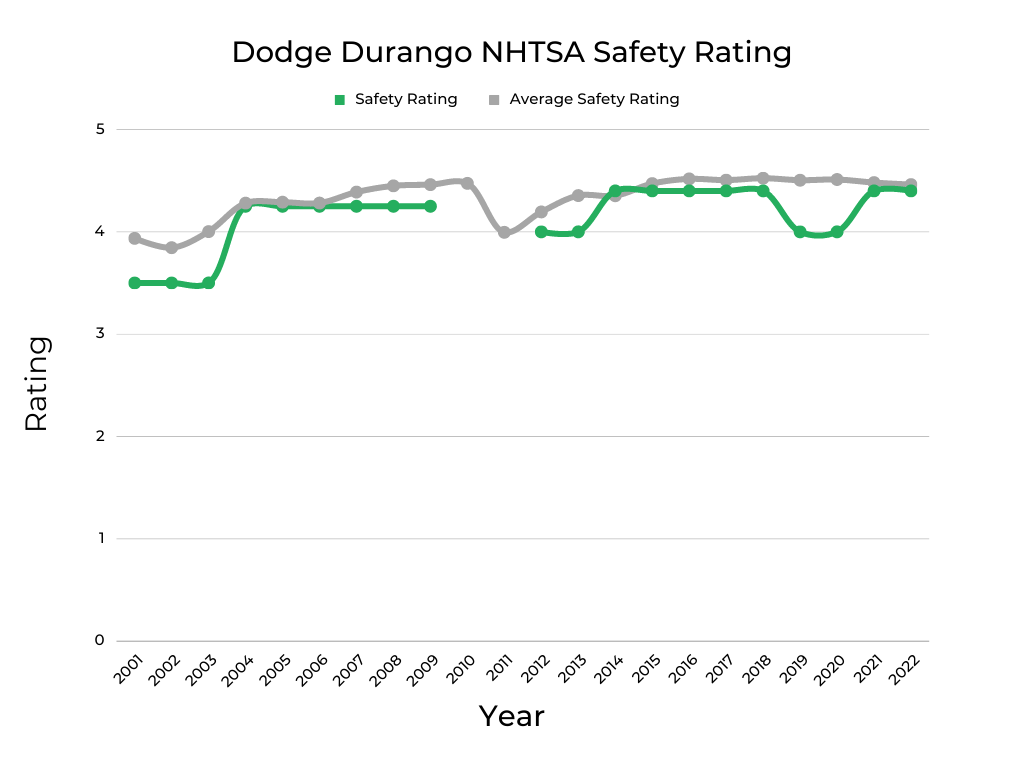
The National Highway Transportation Safety Administration (NHTSA) crash tests most passenger vehicles on the road. After testing, the NHTSA provides every model year with a score, showing which ones are the safest and which aren’t optimal choices.
In our graph above, the green line shows you the average safety rating on Dodge Durango models. Look at it in relation to the gray line, which reveals the average among all vehicles we have charted.
Most Dodge Durango models fall short of the average score. The exceptions include the 2004-2006 and 2014 SUVs. Considering that the Durango is hailed as a family vehicle, it’s important to take note of these rankings.
It’s also good to get cheap car insurance for your used SUV, which is more challenging to do if it has poor safety ratings.
If you live in one of the states listed below, we can show you the cheapest vehicles to insure in yours.
| What Used Cars Are the Cheapest To Insure In: |
| Ohio |
| North Carolina |
| Michigan |
| Georgia |
| Texas |
| New York |
| Illinois |
| Pennsylvania |
| California |
MPG – Over The Years
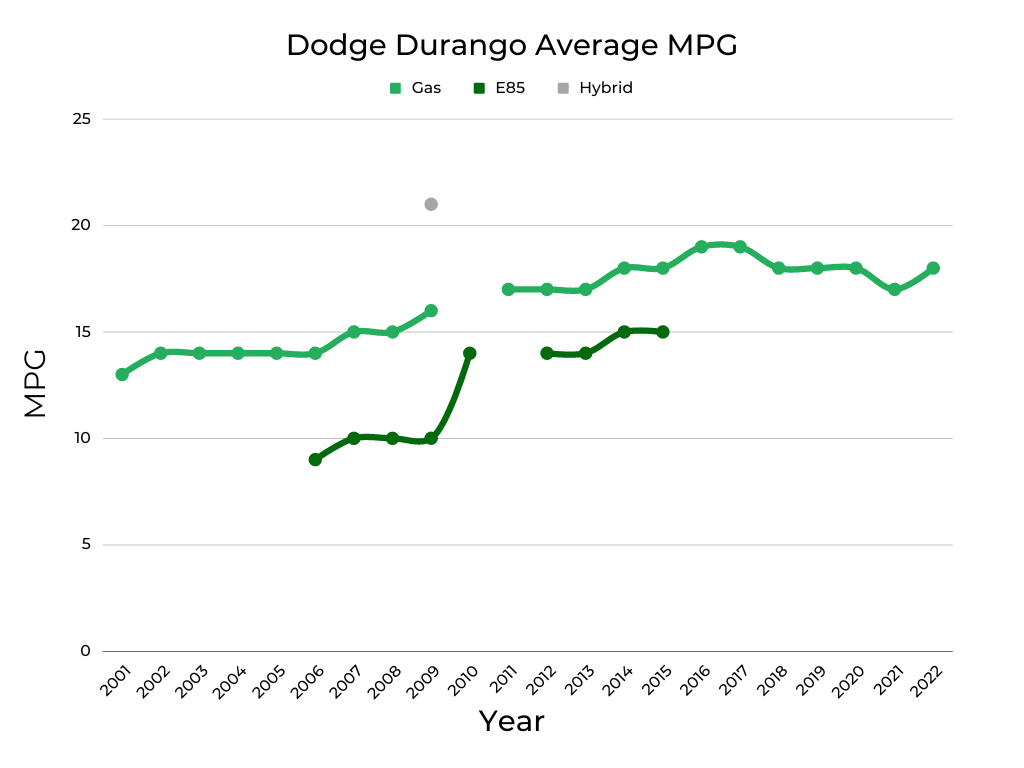
The Dodge Durango is a full-size SUV, so it’s not expected to earn sensational fuel economy numbers. Yet, you can still save a little money if you choose a more fuel-efficient model over one that guzzles down the gas.
Our graph shows the average Dodge Durango fuel economy numbers by model year based on data from fueleconomy.gov. The light green line reveals average gas-powered model scores among the trim levels. The darker green line reveals the rankings of the E85 Durango models. There’s also one model year (2009) that had a hybrid configuration (illustrated with the gray dot). Based on this information, the hybrid is the most efficient, with the 2016 and 2017 gas-powered Durangos coming in second place for the best fuel economy ratings at 19 mpg.
Current Market Value of All Dodge Durango Years & Cost Per Year to Repair and Maintain Each
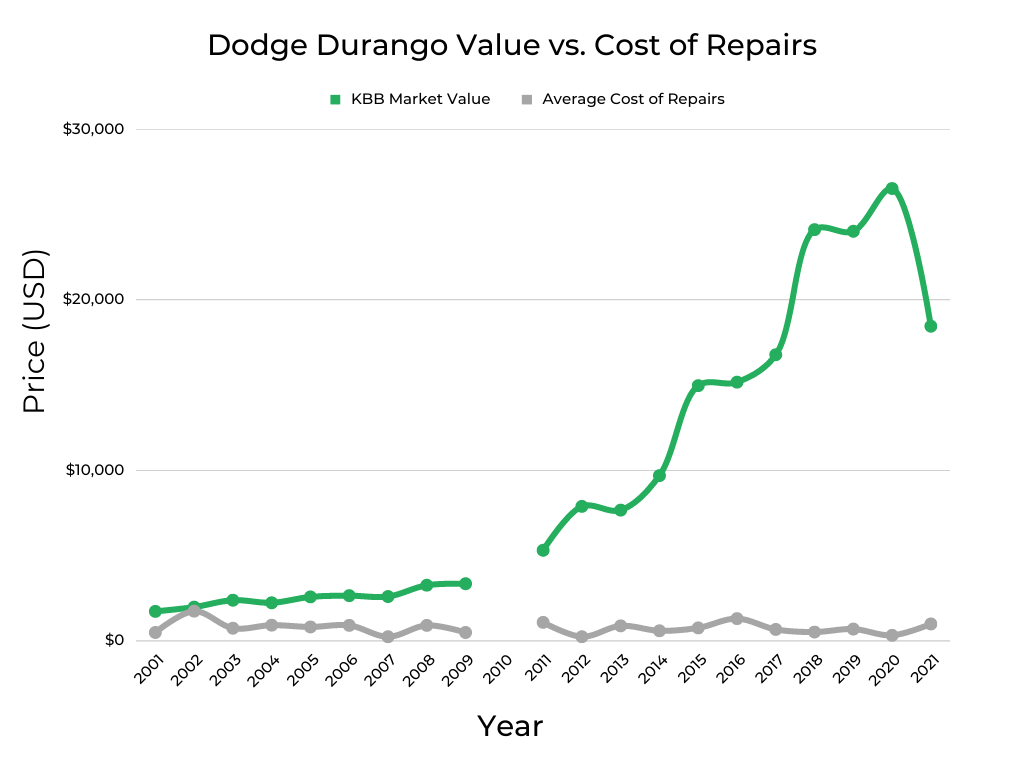
The Dodge Durango can cost a good chunk of change, depending on what model and options you choose. Yet, there are some older low-cost models to pick from too. That’s why it’s imperative to evaluate the average resale values based on model year, trim level, and mileage before making a decision.
Reliability can also affect resale values. If an SUV spends a lot of time in the shop, it’s going to be worth less overall. With all these factors involved, it’s essential to run a customized KBB report before you buy or sell a Durango.
If you see two Durango models with similar resale values, it’s usually better to choose the newer one with less mileage. As long as it’s ranked high in the reliability study, you can usually take advantage of better technology and enjoy more years on the road.
When shopping for a used Dodge Durango, it’s important to keep in mind that not all vehicles are cared for equally. To protect yourself from lemons, take along a FIXD Sensor on your test drive. FIXD connects to a free app on your smartphone to tell you more about the vehicle you’re checking out, including check engine lights and other hidden issues that the owner or dealership may be attempting to hide. Click here to learn more and get FIXD for only $19.99 (regular price $59)!
Important Features Timeline
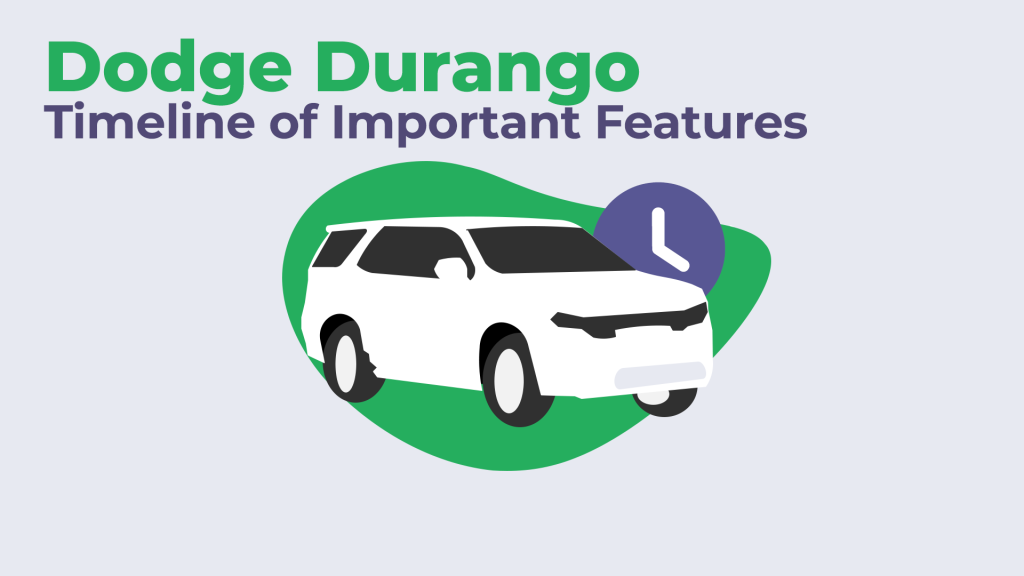
1998: Brand-new model offering the most cargo space in its class with eight-passenger seating and 3.5 tons of towing capacity
1999: 2WD introduced, rear power outlet becomes standard, newly available steering wheel-mounted radio controls and heated mirrors
2000: 4.7L V8 available on 4WD models, standard rack-and-pinion steering introduced, R/T (performance) model debuts
2001: Electronic transfer case standard with 4WD models, instrument panel design updated, 5.2L V8 discontinued, new appearance package for the SLT trim includes 16-inch aluminum wheels, special body side moldings, lower panels, and running boards
2002: SXT trim becomes entry-level model, newly equipped five-speed automatic transmission introduced, DVD video entertainment system becomes optional
2003: Sport trim gets bigger wheels, standard four-wheel disc brakes released, six-disc CD changer becomes optional
2004: 2nd generation released with optional Hemi V8 powertrain
2005: SXT and SLT Adventurer trims released, standard cloth heated seats introduced on all models except the Limited with leather heated seats, newly available full-screen navigation screen
2006: 5.7L Hemi V8 updated to include better fuel economy, 17-inch alloy wheels become standard, newly optional equipment includes a power rear liftgate, stability control, and remote vehicle start
2007: Standard side airbags released, front end receives new fenders, hood, headlamps, and grille, Limited trim includes standard leather-wrapped console lid and rear park assist technology
2008: Next-generation 4.7L V8 released, single-speed transfer case available on select 4WD models
2009: Hybrid model debuts, 5.7L Hemi V8 provides cylinder deactivation for more power with a drop in fuel economy, Sirius Backseat TV included with rear-seat entertainment technology, Adventurer trim discontinued
2010: Production stopped at the Newark Assembly facility towards the end of 2008, so there was no 2010 Durango model
2011: Completely redesigned models released for the 3rd generation once production started back up
2012: Six-speed automatic comes with V8 models, available second-row captain’s chairs offered
2013: Remains mostly unchanged
2014: Newly released eight-speed automatic transmission, updated front and rear styling, newly available 8.4-inch touchscreen, and rear-seat Blu-ray player
2015: R/T trim offers available red leather upholstery, Blacktop package includes gloss-black exterior trim, lineup has newly available Beats by Dr. Dre
2016: Base V6 comes with an automatic stop-start system, new Sport mode becomes standard to alter steering calibration, transmission shift programming, and throttle response
2017: GXT trim replaces the Limited and includes a monochromatic exterior, base SXT has a two-row variant
2018: 475-horsepower SRT model debuts. Apple CarPlay and Android Auto come standard with all trim levels
2019: Newly available 19-speaker Harman Kardon stereo
2020: Remains mainly unchanged
2021: Refreshed interior with larger standard touchscreen display and wireless Apple CarPlay/Android Auto, SRT Hellcat includes a supercharged 6.2L V8 engine
2022: Hellcat model discontinued, additional safety features become standard
The Best Years of the Dodge Durango
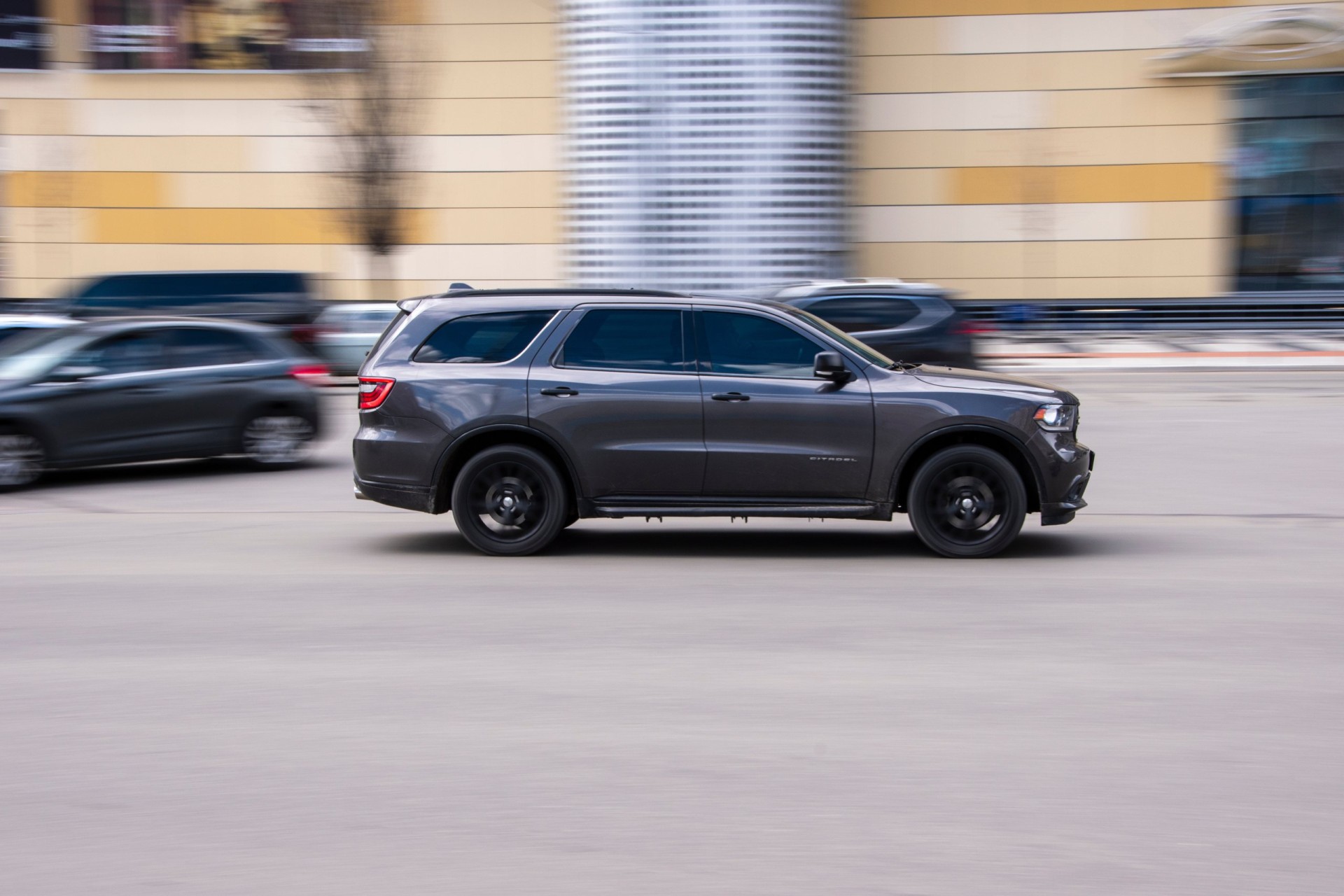
We determined the best Durango models based on the Owner Satisfaction Score and FIXD Reliability Score. However, these two factors can’t be used exclusively. The fuel economy, cost of ownership, safety ratings, and trouble code information must also be examined. We also take a minute to look at the recalls listed by the National Highway Traffic Safety Administration (NHTSA) before determining which ones are best.
In our Best & Worst Dodge Durango list, there’s no 2010 model because Dodge didn’t make one. We’ve also excluded the 2007 and 2012 models because of a lack of response from users. The 2021 Dodge Durango is also excluded because of a lack of FIXD Reliability data. However, we would group these with the closest models to them because there weren’t any major changes that year. With just a few more respondents, the rankings could have drastically shifted, so it’s best to skip over them.
2017-2020 Dodge Durango
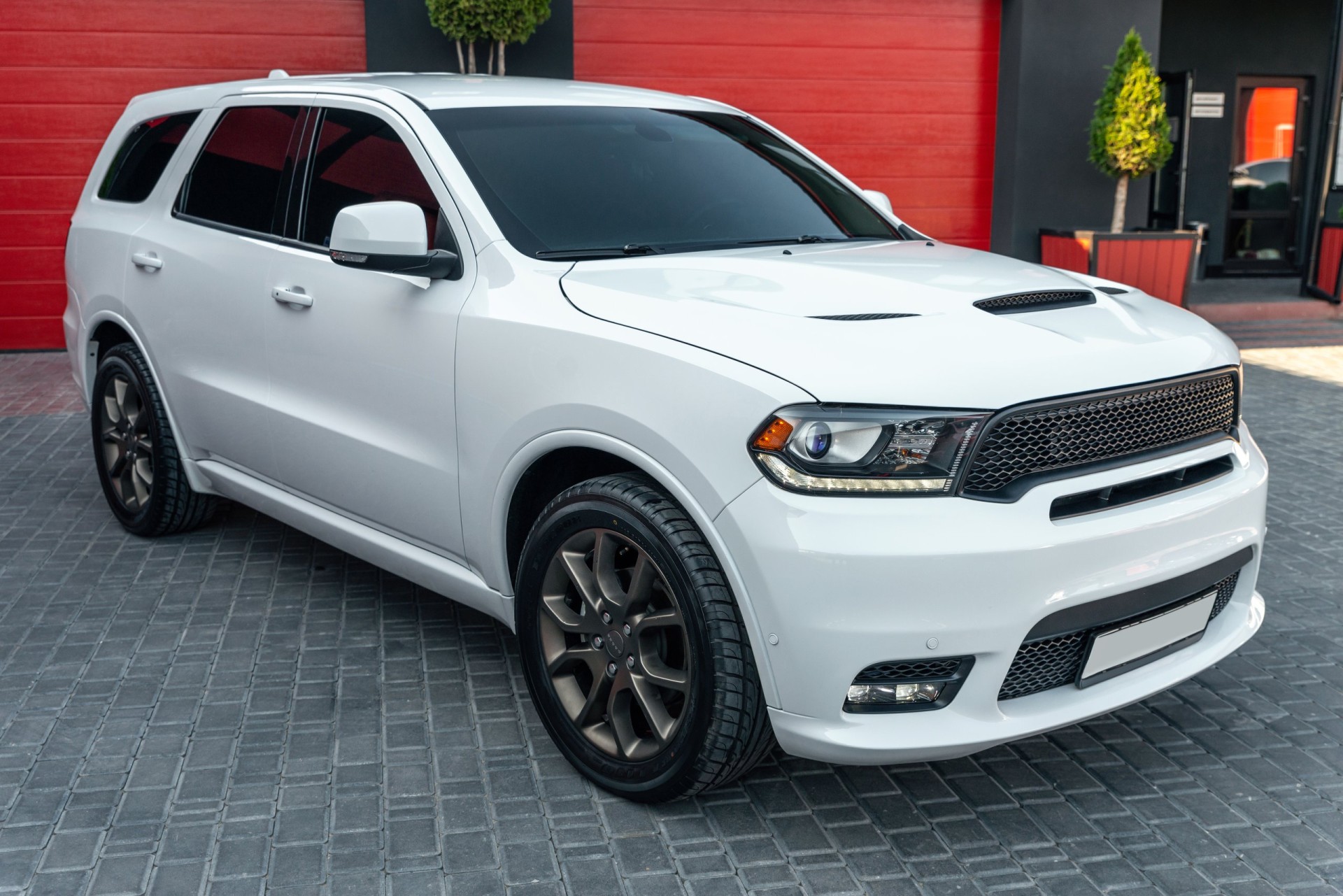
FIXD Reliability Score: 7-10/10
Owner Reliability Score: 9-10/10
KBB Value: $16,744-$26,523
Fuel Economy: 18-19 mpg (gas)
Annual Maintenance/Repair: $333-$700
Safety Rating: 4-4.4/5
The newer models are going to be among the best because of their high-reliability ratings and reasonable cost of ownership.
The Owners Reliability score of the 2019 Durango is a perfect 10 out of 10. The other three Durango models are rated at 9 out of 10, which is still impressive. With the FIXD Reliability score, the 2019 and 2020 models earn 10 out of 10, while the 2017 Durango shows 9 out of 10, and the 2018 Dodge SUV gets a rating of 7 out of 10.
The 2017 and 2018 Dodge Durango also have a crash test rating of 4.4 (out of 5). In comparison, the 2019 and 2020 Dodge Durango only earn a 4.0 (out of 5).
The cost of ownership is also impressive, considering the large size of this SUV and the power that’s needed to propel it. The 2020 Dodge Durango has the lowest rating at just $333 per year. From there, the 2018 Durango averages $528, and the 2017 model is rated at $679. Among the four models, the 2019 Durango tends to cost the most at $700 a year. However, some of these models may still be covered by the 3-year/36,000-mile limited warranty or 5-year/60,000-mile powertrain warranty, which helps to reduce some of the costs.
There’s a common diagnostic trouble code (DTC) among the 2017, 2018, and 2019 Dodge Durango. All three models suffer from the Evaporative Emission Control System Leak – Small (P0456) code. If the SUV requires a new Evaporative System Integrity Monitor (ESIM) Assembly, it could cost you $200 to $560. Both the 2017 and 2019 models also suffer from a generic Evaporative Emission Control System Malfunction (P0440) code that could be related to the previous one. The 2020 Dodge Durango seems to regularly deal with the Lost Communication With TCM (U0101) code, which could be serious. It also shows signs of the Cooling Fan 1 Control Circuit Malfunction (P0480) and the Cooling Fan 2 Control Circuit Malfunction (P0481) codes.
The 2017 Dodge Durango only shows two recalls, while the 2018 Dodge Durango has four recalls and one investigation. The 2019 Dodge Durango has three recalls, and the 2020 Dodge Durango only has two recalls.
2013-2015 Dodge Durango
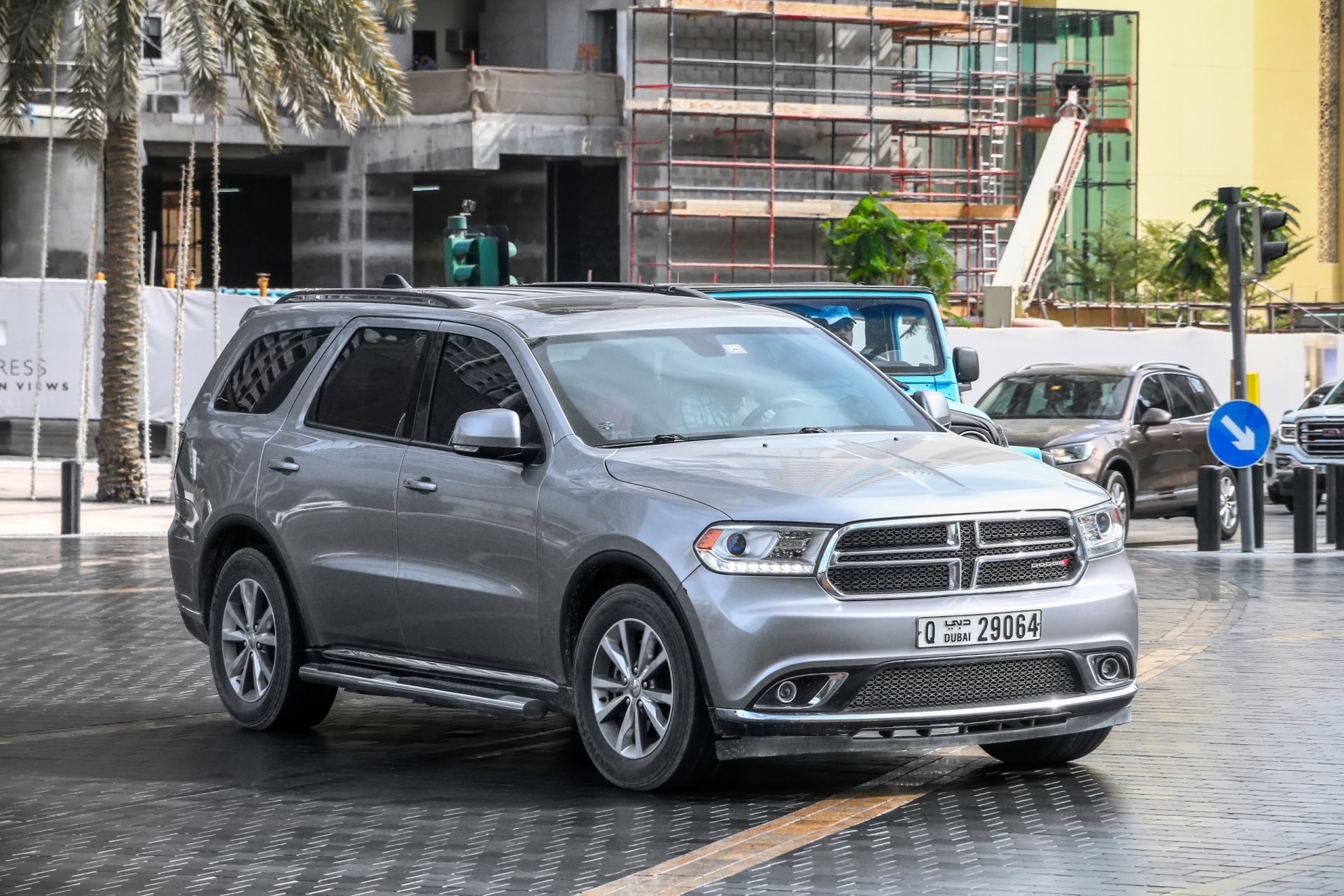
FIXD Reliability Score: 7-8/10
Owner Reliability Score: 9-10/10
KBB Value: $7,673-$14,968
Fuel Economy: 17-18 mpg (gas), 14-15 mpg (E85)
Annual Maintenance/Repair: $600-$889
Safety Rating: 4-4.4/5
Even though these are a little older, they still perform nearly just as well as our best Durango choices, with good ratings and exceptional ownership costs.
The Owners Reliability score of the 2014 Durango is a perfect 10 out of 10. The other two Durango models are rated at 9 out of 10, which we aren’t going to complain about. With the FIXD Reliability score, the 2015 model earns 8 out of 10, while the 2013 and 2014 Durangos show 7 out of 10.
The 2014 and 2015 Dodge Durango have a crash test rating of 4.4 (out of 5). The 2013 Durango doesn’t do much worse at 4.0 (out of 5).
These older models don’t even have an excessive cost of ownership. The 2014 Dodge Durango averages $600 a year, while the 2015 Durango only sits at $769 a year. Even at the top ($889 a year), the 2013 Dodge Durango is still impressive.
The same common diagnostic trouble code (DTC) occurs among the 2013, 2014, and 2015 Dodge Durango. All three models suffer from the Evaporative Emission Control System Leak – Small (P0456) code. Both the 2014 and 2015 models also show a higher instance of the generic Evaporative Emission Control System Malfunction (P0440) code. These issues could require a new Evaporative System Integrity Monitor (ESIM) Assembly, costing an average of $200 to $560. There’s also an elevated risk of the Coolant Thermostat Temperature Below Regulating Temperature (P0128) code with all three Durango models. To replace the engine coolant thermostat, you may spend $470 to $512.
Sadly, the 2013 Dodge Durango has 11 recalls and four investigations, while the 2014 Dodge Durango shows 11 recalls and seven investigations. Thankfully, the 2015 Dodge Durango does better with four recalls and three investigations.
2001 Dodge Durango
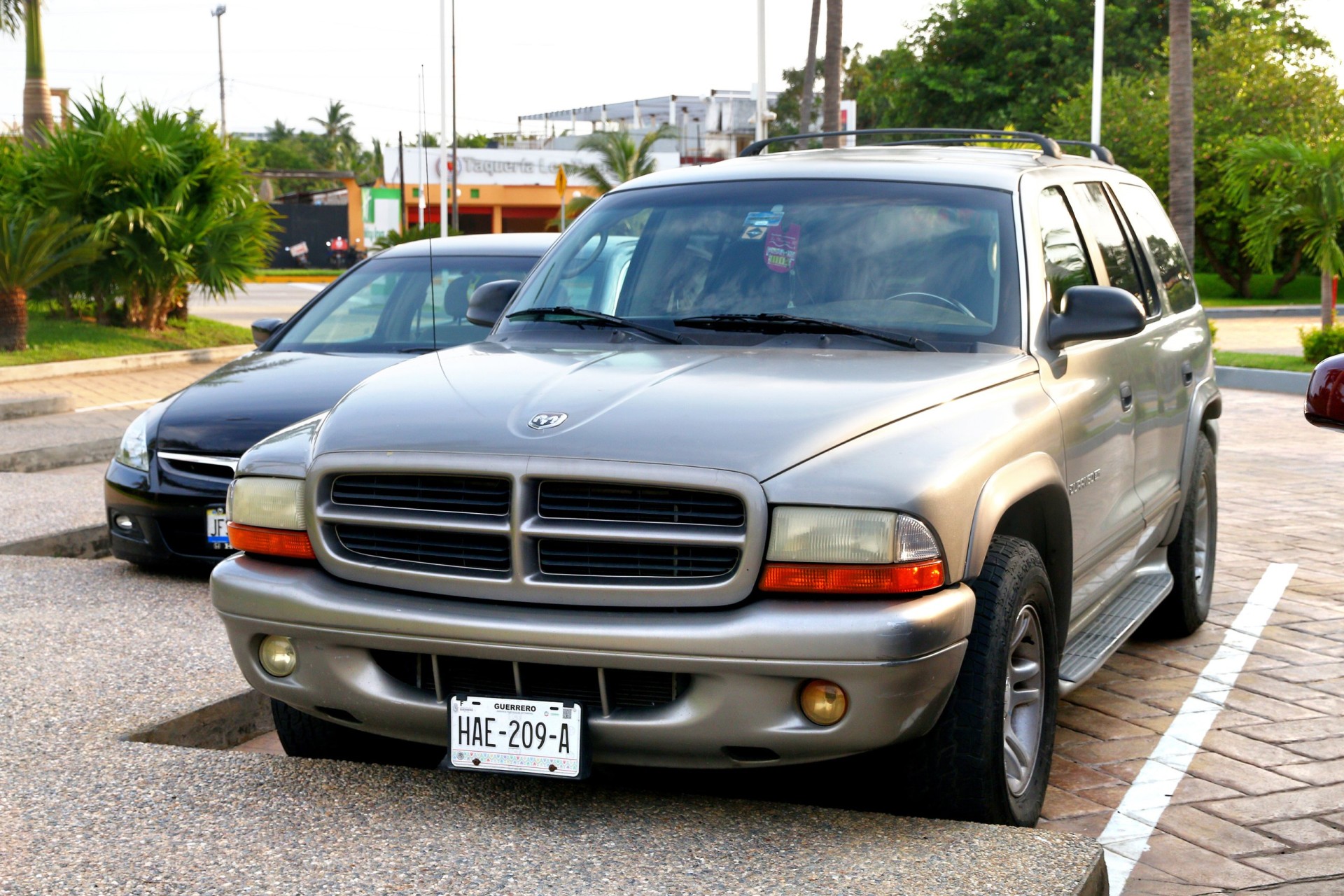
FIXD Reliability Score: 1/10
Owner Reliability Score: 6/10
KBB Value: $1,736
Fuel Economy: 13 mpg (gas)
Annual Maintenance/Repair: $500
Safety Rating: 3.5/5
At the end of our best Dodge Durango models, we had to include the 2001 model. While it’s older and doesn’t have a high resale value, it has a low cost of ownership and doesn’t suffer from massive repairs.
The Owners Reliability score of the 2001 Durango is 6 out of 10. The FIXD Reliability score only gives the 2001 Durango a 1 out of 10, which is common on older models.
The 2001 Dodge Durango has a crash test rating of 3.5 (out of 5). This is a sad rating, but also expected with its older age.
The 2001 Dodge Durango does show an average annual cost of just $500 a year. That’s a phenomenal number considering the age of the SUV. However, you must consider that if a major repair does occur, it may not be worth fixing.
The most common diagnostic trouble code (DTC) with the 2001 Dodge Durango is the Evaporative Emission System Leak Medium (P0442) problem. It also deals with the System Gross Leak Evaporative System Malfunction (P0455) DTC, which is usually related to the first one. Finally, it can reveal the Target Idle Not Reached (P1294) code. Any of these can lead to a major repair that puts your Durango in the junkyard, so that’s important to keep in mind.
The 2001 Dodge Durango has seven recalls and five investigations.
The Worst Years of the Dodge Durango
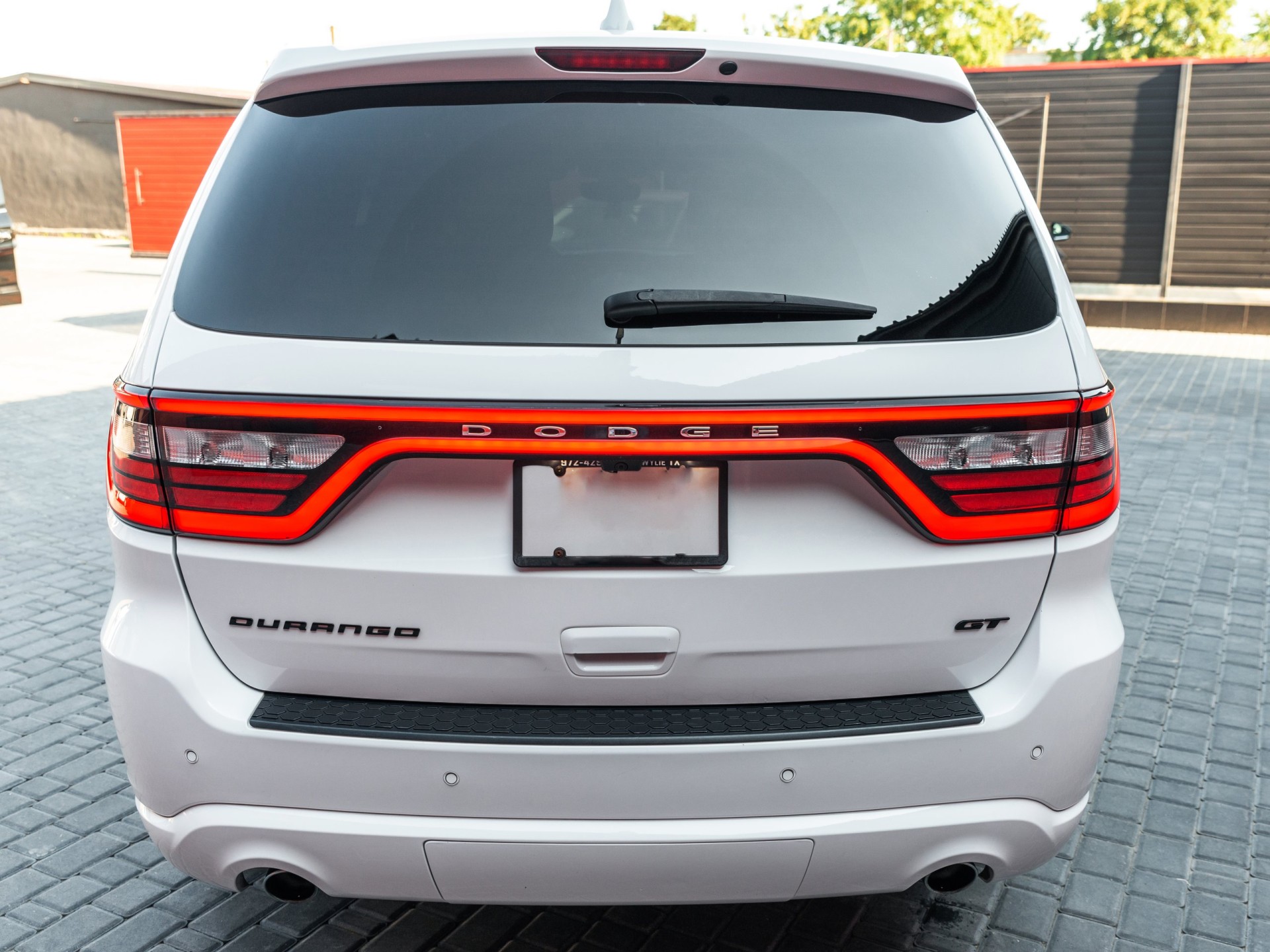
Based on the same information used to pick the best Dodge Durango models, we’ve figured out which model years should be avoided. These SUVs have increased reliability issues, larger maintenance bills, and some expensive repairs. We start with the worst of the Durango models and work towards some that aren’t quite as awful.
2002-2006 Dodge Durango
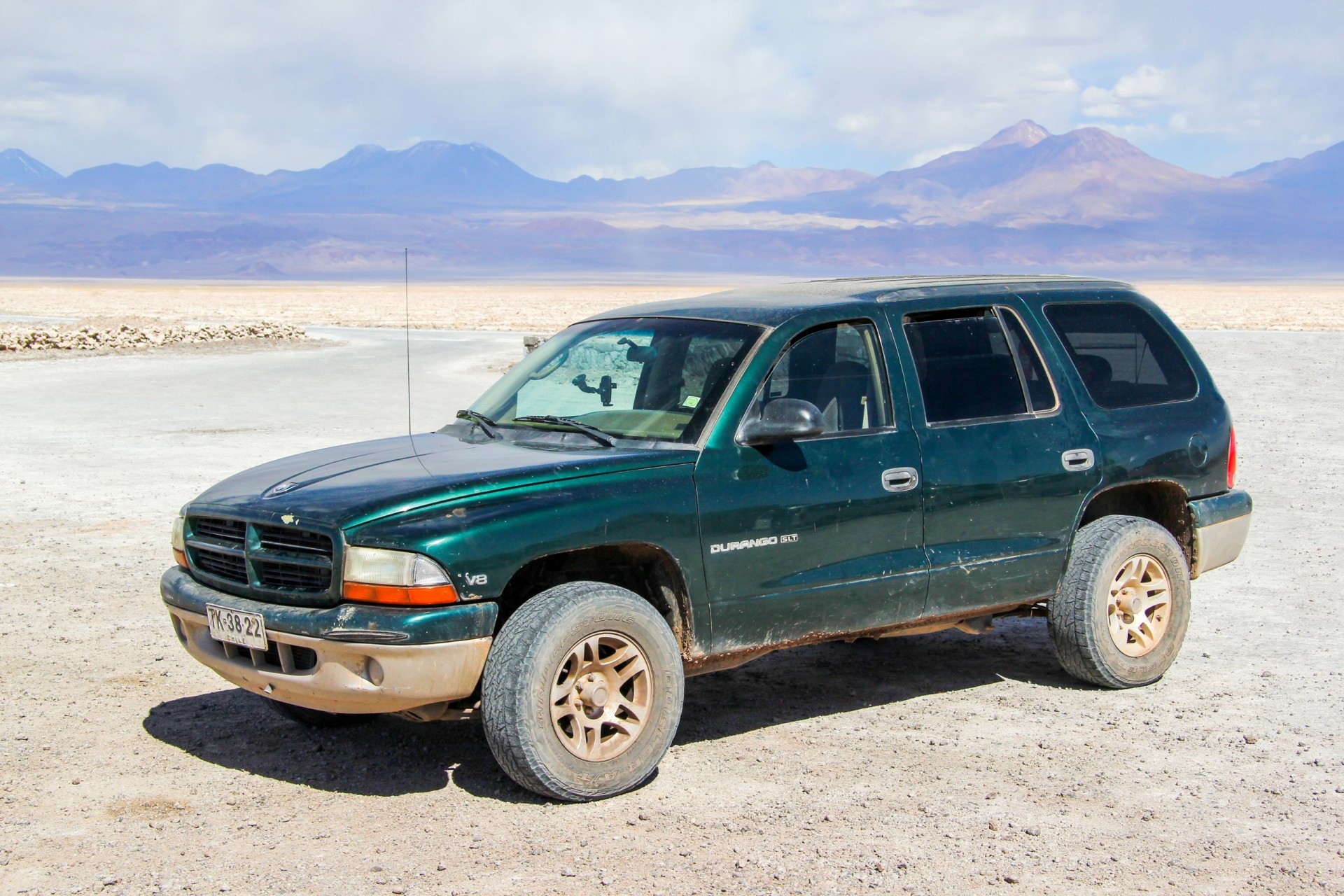
FIXD Reliability Score: 1-2/10
Owner Reliability Score: 6-8/10
KBB Value: $1,987-$2,660
Fuel Economy: 14 mpg (gas), 9 mpg (E85)
Annual Maintenance/Repair: $750-$1,750
Safety Rating: 3.5-4.25/5
These older Dodge Durango models don’t have good reliability scores and tend to suffer from expensive repairs. With the low resale value, there’s no wiggle room when it comes to repairs.
The Owners Reliability score of the 2003 and 2005 Durango is 6 out of 10. The 2002 and 2006 Durango models earn 7 out of 10, while the 2004 Dodge SUV gets the highest of the bunch at 8 out of 10. In comparison, the FIXD Reliability score of the 2003, 2004, and 2005 Durango is just 1 out of 10, while the 2002 and 2006 model years earn 2 out of 10.
Among these five model years, the 2006 Durango is the only one that is configured for E85. The other four Durango model years can only be found with standard gas powertrains.
The 2002 and 2003 Dodge Durango models only have a crash test rating of 3.5 (out of 5). The 2004, 2005, and 2006 model years do slightly better at 4.25 (out of 5).
There’s a wider range of maintenance costs with this bunch of SUVs. At the lowest end, the 2003 Durango is rated at $750, while the 2002 model tops the charts at $1,750 a year. What’s more alarming is the higher chance of mechanical issues. The 2003 to 2006 models suffer from engine repairs, while the 2002 Durango tends to deal with expensive brake repairs. All five models also deal with AC/heat issues, while the 2005 and 2006 models have a higher chance of fuel system troubles. One major repair sends this SUV to the scrap yard.
Both the 2002 and 2003 Dodge Durangos deal with the Evaporative Emission System Leak Medium (P0442) problem. They also show a higher instance of the Evaporative Emission Control System Leak – Small (P0456) code, which is likely related to the first one. What’s more alarming is how the 2004, 2005, and 2006 Durango models show a chance of the Transmission Control System Malfunction (P0700) code. If you need to replace the transmission, you may spend $2,528 to $3,045, thereby exceeding the value of the SUV. These three models also show an increased chance of the Multiple Misfire Detected (P0300) DTC. This condition may just require spark plugs, costing $58 to $167.
Both the 2002 Dodge Durango and 2003 Dodge Durango show six recalls and five investigations. The 2004 Dodge Durango does even worse with nine recalls and nine investigations, while the 2005 Dodge Durango reveals nine recalls and ten investigations. Also alarming is the 2006 Dodge Durango with its ten recalls and seven investigations.
2016 Dodge Durango
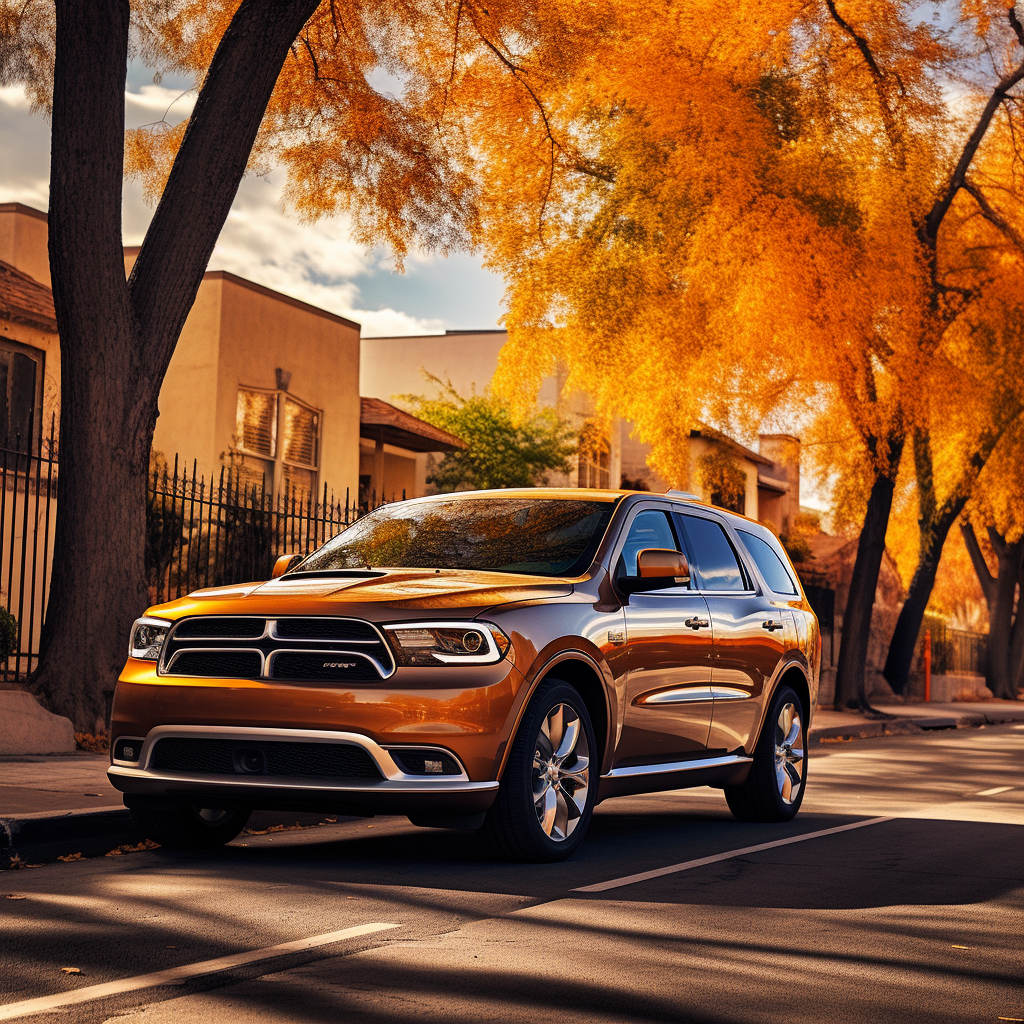
FIXD Reliability Score: 8/10
Owner Reliability Score: 10/10
KBB Value: $15,173
Fuel Economy: 19 mpg (gas)
Annual Maintenance/Repair: $1,313
Safety Rating: 4.4/5
The 2016 Dodge Durango is a newer model that seems to be liked by owners, but it’s hard to understand why. With exceptionally high maintenance bills and an extremely high chance of mechanical repairs, this would be one model to avoid.
The Owners Reliability score of the 2016 Durango is 10 out of 10. However, we believe that a few more respondents to our survey would have lowered this score dramatically. In comparison, the FIXD Reliability score of the 2016 Durango is 8 out of 10.
The 2016 Dodge Durango models show a crash test rating of 4.4 (out of 5). Sadly, this score still falls below the average.
What’s most alarming is the cost of maintenance and repairs. At an average of $1,313 a year, any owner could quickly go broke. There’s also an increased likelihood of engine and brake issues.
The most common error with the 2016 Dodge Durango is the Humidity Sensor Module (P1009) code. There’s also the chance of the Evaporative Emission Control System Leak – Small (P0456) code. For this repair, you may need a new Evaporative System Integrity Monitor (ESIM) Assembly, costing $200 to $560. Otherwise, you may see the Cylinder 2 Misfire (P0302) code. If a new ignition coil is required, you may spend $51 to $173.
On the bright side, the 2016 Dodge Durango only has three recalls and one investigation.
2011 Dodge Durango
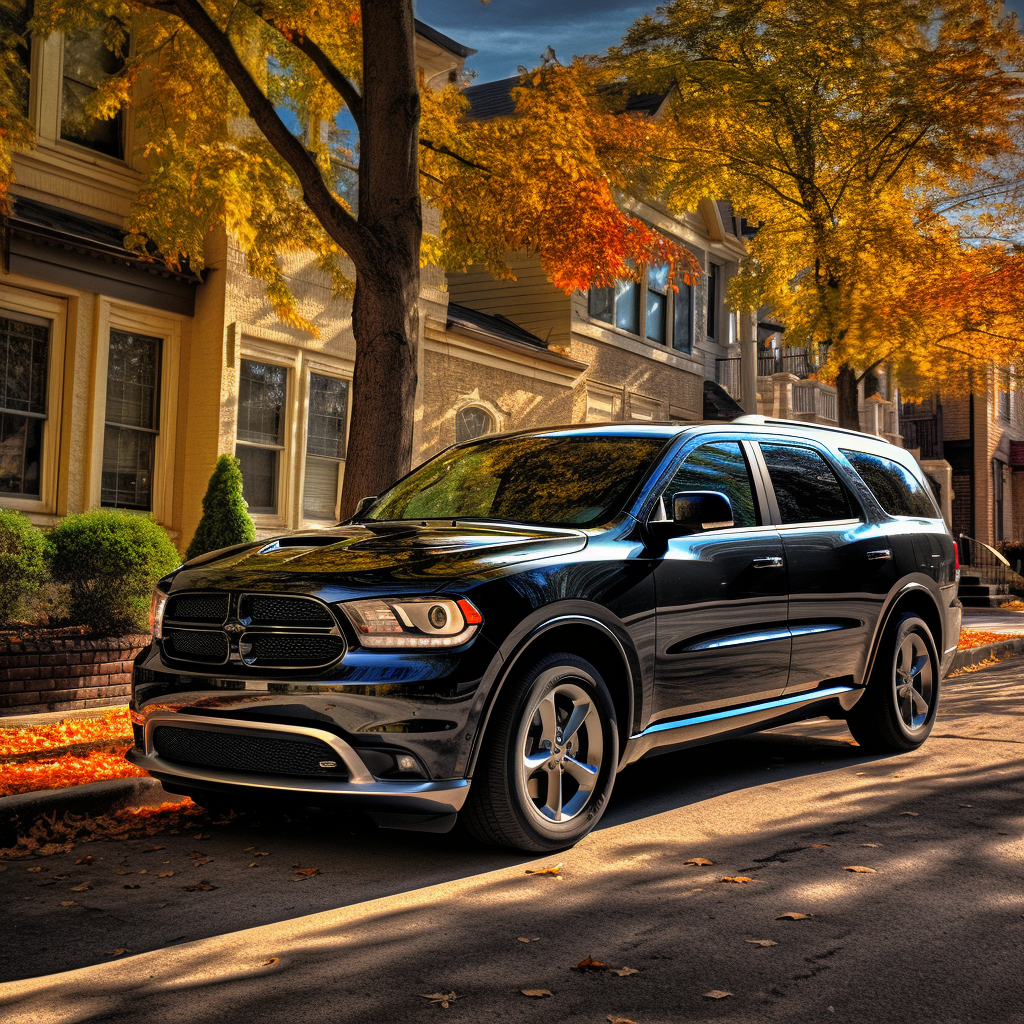
FIXD Reliability Score: 7/10
Owner Reliability Score: 9/10
KBB Value: $5,319
Fuel Economy: 17 mpg (gas)
Annual Maintenance/Repair: $1,094
Safety Rating: N/A
The 2011 Dodge Durango also has a higher cost of maintenance and repairs. Aside from that, the chance of mechanical issues is high.
The Owners Reliability score of the 2011 Durango is 9 out of 10. In comparison, the FIXD Reliability score of the 2011 Durango is 7 out of 10.
The average annual cost of maintenance and repair is $1,094, which is excessive considering it’s only a little over a decade old. Plus, there’s an elevated chance of engine, transmission, AC/heat, and fuel system issues.
Most commonly, the 2011 Dodge Durango deals with the Catalyst System Efficiency Below Threshold – Bank 1 (P0420) and the Catalyst System Efficiency Below Threshold – Bank 2 (P0430) codes. With either of these, you may need to install a new catalytic converter, costing an average of $1,538 to $2,041. Additionally, there’s a chance of the Camshaft Position Sensor Circuit Malfunction (P0340) DTC. This problem may require a new camshaft position (CMP) sensor, costing between $56 and $159.
The 2011 Dodge Durango is subject to eight recalls and four investigations.
2008-2009 Dodge Durango
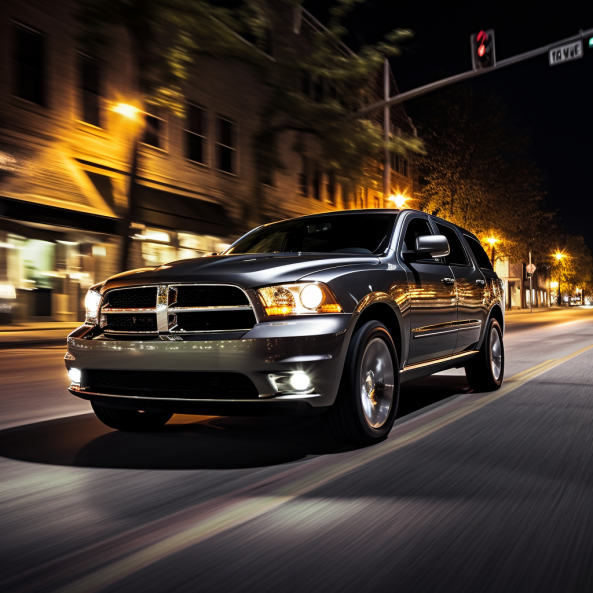
FIXD Reliability Score: 3-6/10
Owner Reliability Score: 7/10
KBB Value: $3,268-$3,358
Fuel Economy: 15-16 mpg (gas), 10 mpg (E85), 21 mpg (hybrid)
Annual Maintenance/Repair: $500-$917
Safety Rating: 4.25/5
The 2008 and 2009 models were the final ones before Dodge took a year without Durango production. While the cost of ownership doesn’t seem too high, reliability scores have dropped and there have been some reported issues.
The Owners Reliability score of both the 2008 and 2009 Durango is 7 out of 10. In comparison, the FIXD Reliability score of the 2008 Durango is 6 out of 10, while the 2009 Durango falls to 3 out of 10, possibly because of the hybrid engine.
The 2008 and 2009 Dodge Durango models show a crash test rating of 4.25 (out of 5). This rating still falls below the average.
We aren’t unhappy about the projected cost of ownership. The 2009 Durango averages $500 a year, while the 2008 Dodge SUV is rated at $917. Yet, they both show a higher chance of expensive brake repairs and the 2008 model may also deal with fuel system trouble.
Both Durango models struggle with the Evaporative Emission Control System Leak – Small (P0456) code, along with the Evaporative Emission (EVAP) Control System Leak (P0457) DTC. Additionally, the 2008 Durango deals with the System Gross Leak Evaporative System Malfunction (P0455) code, which are all related to one another. It’s possible that a new Evaporative System Integrity Monitor (ESIM) Assembly would be needed to repair any of these, costing $200 to $560. Additionally, the 2009 Dodge Durango shows a higher chance of the Catalyst System Efficiency Below Threshold – Bank 1 (P0420) code, possibly leading to the need for a new catalytic converter with prices ranging from $1,538 to $2,041.
The 2008 Dodge Durango shows two recalls and one investigation. The 2009 Dodge Durango is slightly worse with its four recalls and two investigations.
FAQs
What years of the Dodge Durango have engine and/or transmission problems?
Based on our data, the 2003-2005, 2011, 2016, 2019, and 2021 Dodge Durango models are more likely to suffer from expensive engine repairs. There’s also a higher chance of transmission repairs with the 2011 and 2020-2021 models.
What is considered high mileage for a Dodge Durango?
Dodge Durango SUVs are family vehicles made to hold large groups of people. For the most part, they are meant to hold up, even after many miles of travel, especially when they are well-maintained. With proper care, you could easily get 250,000 miles out of your SUV.
Based on our data, a high-mileage Dodge Durango could be considered anything over 200,000 miles.
The 2007 Dodge Durango has the highest mileage in our surveys at 275,000 miles, but it’s unlikely the SUVs will go much further than that. If you plan to buy a Durango with a lot of miles, remember that the resale value goes down with the increased mileage on the odometer.
Do any hybrid years have problems?
The Dodge Durango only offered a hybrid powertrain in 2009. It received good fuel economy numbers but wasn’t a successful option, so it was discontinued. Based on our research, there weren’t major engine problems, but owner satisfaction scores were slightly lower for this year.
What other vehicles should I consider?
Sadly, Dodge doesn’t make any other SUVs comparable to the Durango. If you want to stick with the brand, you would be forced to purchase a Dodge Grand Caravan, which also holds a lot of people. You could also opt for the discontinued Chrysler Aspen, which was a more luxurious form of the Durango.
Among other brands, you have plenty of options. Consider the Kia Telluride, Hyundai Palisade, Chevrolet Traverse, Jeep Grand Cherokee L, Mazda CX-9, or the Honda Passport. You may also consider the Honda Pilot, Volkswagen Atlas, Chevrolet Tahoe, Ford Expedition, Chevrolet Suburban, Toyota Sequoia, or Nissan Armada.
What owners of the Dodge Durango like to use their car for:
Percent based x/5-star: 0-10% = 1, 11-20% = 2, 21-30% = 3, 31-40% = 4, 41%+ = 5
| Frequent Use Categories: | How Useful? (Out of 5 Stars) |
| Family Vehicle | ***** |
| Lots of Driving (travel/long commute) | *** |
| Hauling/Towing | ** |
| Office on Wheels | * |
| Sport/Fast Driving | * |
| Luxurious Driving | * |
| Outdoor/Off-Road | * |
A Note About Data and Information Sources
This article has many details about Dodge Durango’s reliability; here’s what we used for our assumptions and recommendations.
- FIXD Reliability Score & Data: Engine reliability information is captured via the FIXD App.
The FIXD Reliability Score is calculated using the number of DTCs per year, weighted by mileage. This is then turned into a scale of 1-10 for easy graphing.
This is an objective score.
- Owner Reliability Score & Data: This data is the result of surveying Dodge Durango owners who use FIXD.
The Owner Reliability Score comes straight from owners of the Dodge Durango.
This is a subjective score.
To determine the Owner Reliability Score we ask each car owner:
How reliable would you say your Dodge Durango is?
a. Just point A to point B driving
b. A Daily Commuter
c. Good for a 100 mile road trip
d. Good for a 500 mile road trip
e. I could take a cross-country road trip, no problem
From here we translate their answers into the Owner Reliability Score:
a. = 2
b. = 4
c. = 6
d. = 8
e. = 10
Keep in mind, owners may think their car is more or less reliable than it actually is.
One potential problem is that people often buy the same make or model they are used to when they go car shopping, just a newer year.
Ford, for instance, has a number of consumer loyalty awards for the Ford F-Series, Ford Mustang, and Ford Expedition.
Car owners may be so loyal to the make or model they currently own that they would have trouble accurately comparing their cars’ reliability to others.
It’s for this reason that we ask car owners a question that is relative to mileage rather than relative to other cars.
Still, be mindful of the accuracy of these Owner Reliability Scores, people’s perceptions and unconscious blindspots can skew data.
We suggest looking at both the FIXD Reliability Score and the Owner Reliability Score for this reason.
- KBB Value: Average private-seller valuations as supplied by Kelley Blue Book (KBB), based on a Dodge Durango with typical mileage for that respective model year.
- Fuel Economy: Mileage-per-gallon estimates according to the EPA MPG on Fueleconomy.gov
- Annual Maintenance/Repair: Upkeep expenses as reported by surveyed Dodge Durango owners
- Safety Rating: Crash test data collected and reported by NHTSA. We average all ratings for each year to come up with a simplified, average safety score. This makes it easier to look at on a graph.
References
- Dodge Durango, wikipedia.org. Retrieved July 28, 2023, from https://en.wikipedia.org/wiki/Dodge_Durango
- Dodge Durango reviews, edmunds.com. Retrieved July 31, 2023, from https://www.edmunds.com/dodge/durango/
- Dodge Brand Limited Vehicle Warranties, dodge.com. Retrieved August 1, 2023, from https://www.dodge.com/warranty.html

Brian Jones owns a used car dealership outside of Dallas, Texas. He has also worked for decades as an ASE Certified Master Technician for a variety of new car dealerships. Now he spends his time consulting dealerships and writing for some renowned publications, such as Motor1 (https://www.motor1.com/info/team/brian-jones/). When he’s not working, he’s tinkering around with pickup trucks and traveling with his family.

